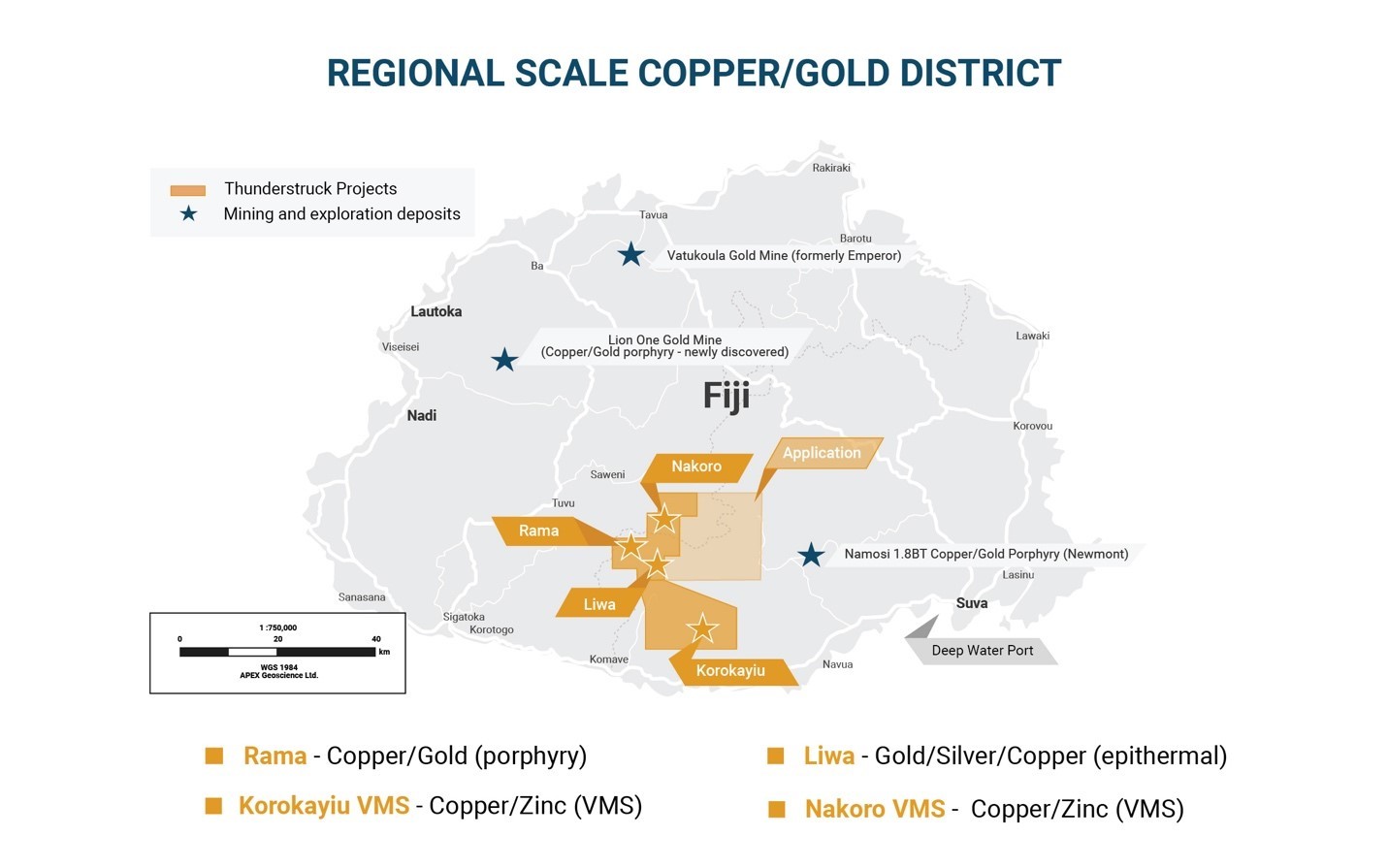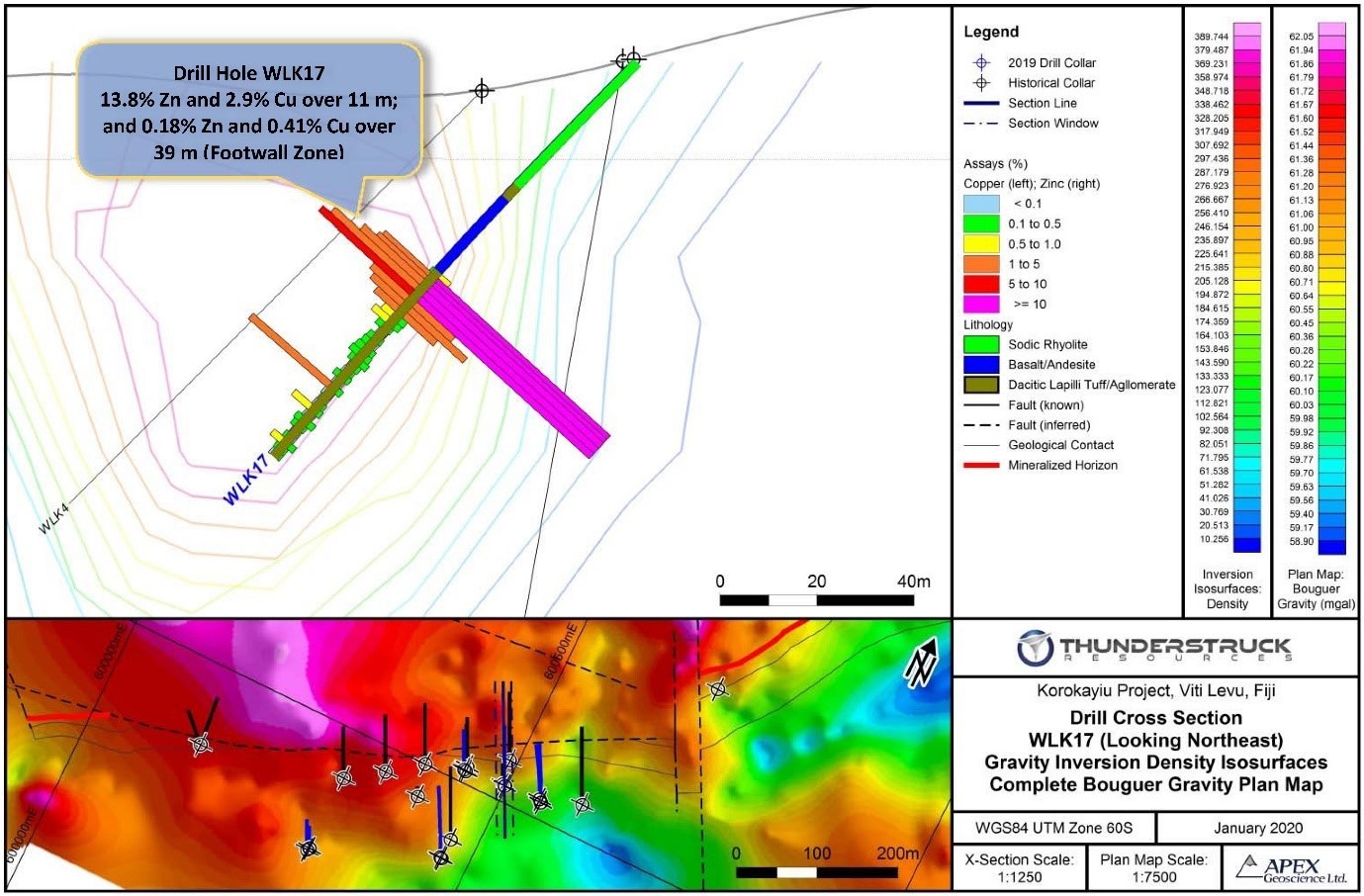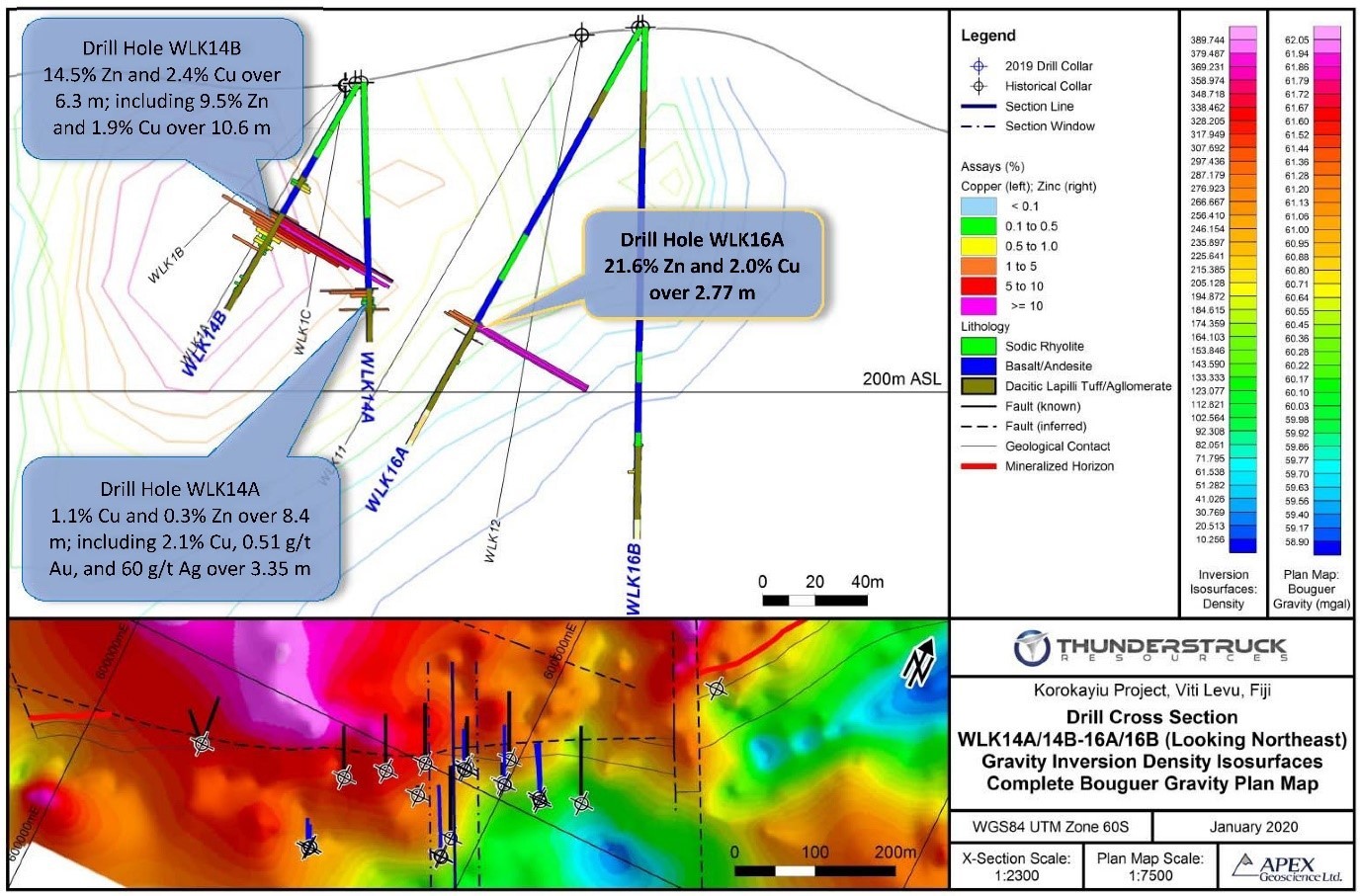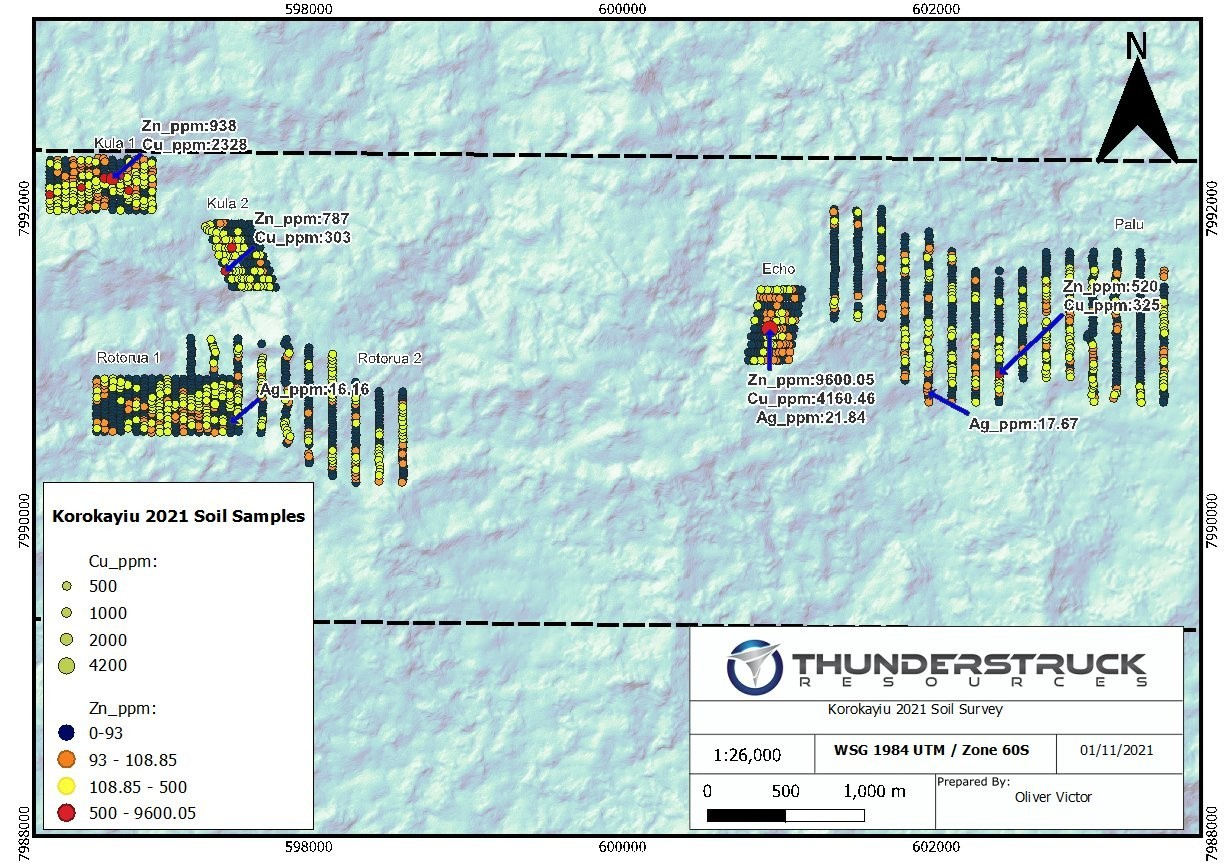Overview
Korokayiu, Thunderstruck's 100% owned, high-grade copper/zinc prospect features approximately 7.5 km of prospective ground along strike, including eight underexplored volcanic massive sulphide (VMS) prospects (see press release August 19, 2019). Historic and recent drilling efforts, along with extensive surface sampling and geophysical programs confirm the presence of favorable mineralization and stratigraphy.
Significant Exploration Potential
In response to favourable exploration results, the tenement area has been increased by 350% from 30 km2 to 136 km2 to facilitate expansion of known mineralization as well as providing the ability to develop Korokayiu alongside the Company’s contiguous high-grade VMS asset to the north, Nakoro.
History
In 1977 Anglo American drilled 15 holes totaling 1850 metres with an average depth of 120 metres, resulting in 4.4% CuEq of 0.25MT @ 8% Zn and 2% Cu (historic non NI-43-101 compliant).
The deposit is near surface (~100m) with open-pit potential.
Anglo’s exploration program indicated that a mineralized zone was open along strike at both ends1 and intersected several anomalous values including2:
- 6.2 m of 12.0 % zinc, 1.8% copper and 25 g/t silver (WLK-1A)
- 10 m of 5.5 % zinc, 2.3% copper and 47 g/t silver (WLK-4)
- 15.5 m of 1.3 % zinc, 1.5% copper and 8.0 g/t silver (WLK-10)
1True widths estimated at 80-100% of drilled interval
2For full descriptions of mineralized intercepts see: Technical Report on Aljen (Pacific) Mineral Properties Viti Levu, Fiji, Prepared for Thunderstruck Resources Ltd., September 15, 2014
Location
The Korokayiu prospect is located on the southern part of Fiji’s largest island, Viti Levu, and is approximately 50 km west of the capital and deep water port of Suva.
Korokayiu lies approximately 25 km south of Nakoro, a high grade VMS prospect also 100% owned by Thunderstruck, opening up the possibility of a potential ‘hub and spoke’ mining district with a central processing facility.

Geology and Mineralization
Geologically, Viti Levu has been exposed to a complexity of crustal plate rotations and has been dominated by island arc development followed by rifting, like that of neighboring Pacific Rim countries. Magmatism, precious and base metal emplacement occurred episodically throughout the evolution of the Fijian platform. The oldest known mineral occurrences were emplaced within low-k tholeiitic volcanics of the Wainimala Group, host to the Korokayiu VMS prospect, and proximal to a major intrusive unit: The Colo Plutonic Suite.
The Volcanic Massive Sulphide mineralization at the Korokayiu prospect is hosted within a fragmental unit that has been subject to extensive hydrothermal alteration. The mineralized unit is underlain by a basement assemblage of intercalated spilitized, tholeiitic basalt and mudstone and contained within a younger suite of basalts, felsic volcanics and associated fragmental rocks. Andesitic units of the younger rocks and the basement assemblage have been intruded by a 6 km long and 1.5 km wide, pervasively altered, subvolcanic to volcanic rhyolite dome complex.
At Korokayiu the base metal sulphides and strong sericite-clay and pyrite alteration are focused at the contact between footwall rhyolites and hanging wall mafic volcanics and basalts. The mineralized lens exhibits mineralogical metal zoning with a top that consists of granular sphalerite in a siliceous matrix, underlain by massive pyrite grading into disseminated chalcopyrite and sphalerite. Below the mineralized lens pyrite stockwork mineralization and low tenor chalcopyrite occurs. The key minerals of interest found at Korokayiu are sphalerite, covellite and chalcopyrite along with tetrahedrite, tennanite, enargite, and chalcocite; typical minerals for a VMS deposit.
Thunderstruck Resources Exploration
Drill Program
A 904m drill program comprising seven drill holes returned grades up to 13.8% Zn and 2.94% Cu, confirming historical results and significantly expanding its resource potential. Preliminary flotation test work confirms amenability to producing Cu and Zn concentrates.
Significant drill intercepts included:



Ground Gravity Survey
In addition to delineating and highlighting areas of known subsurface mineralization, multiple density contrast gravity inversion anomalies occur along strike over a combined distance of approximately 1.4 km. These anomalies are coincident with the mapped continuation of the Korokayiu VMS prospect and are associated with anomalous historical zinc values in trench, rock, and soil samples.

Induced Polarization (IP) Survey
Six line kilometres along four survey lines revealed significant anomalies along strike from the discovery outcrop and coincident with soil/rock anomalies and drill results.
Soil and Rock Geochemistry
Approximately 1500 soil/rock samples along 7.5km of strike length developed a base metal geochemical profile on seven presently known targets.


